Introduction to End Dump Trailers
In the realm of heavy-duty transportation, end dump trailers have carved a niche for themselves, proving indispensable for various industries. They are predominantly used for transporting loose materials, such as dirt, gravel, sand, and other aggregates. This article delves into the intricacies of end dump trailers, exploring their structural components, functionality, advantages, and applications. By the end, readers will possess a deeper understanding of what an end dump trailer is, along with insights into why this equipment is essential for construction and logistics professionals alike.
Structural Components of End Dump Trailers
To fully appreciate the sophisticated engineering behind end dump trailers, it is crucial to understand their primary components:
| Component | Description |
|---|---|
| Chassis | The frame of the trailer, typically made from high-strength steel, designed to bear heavy loads while maintaining structural integrity. |
| Dump Bed | The body of the trailer where materials are loaded; it is inclined to facilitate the unloading process. |
| Hydraulic System | Powers the raising and lowering of the dump bed, featuring cylinders that are controlled by a pump, operated from the tractor’s engine. |
| Tipping Mechanism | A critical function that allows the dump bed to pivot, ensuring materials are discharged efficiently at the desired location. |
| Axles and Tires | Designed to support heavy loads and ensure smooth transportation on various terrains; typically includes dual-axle systems for stability. |
| Kingpin | The pivot point connecting the trailer to the tractor, providing maneuverability and control during transit. |

How End Dump Trailers Work
The operational mechanism of an end dump trailer is both innovative and straightforward. When loading, the dump bed is horizontal, allowing for easy access. Once loaded, the hydraulic system is engaged. This system elevates the front of the dump bed, creating an inclined surface, while the rear, attached to the trailer, remains anchored. As the dump bed rises, gravity takes over, ensuring that materials slide out smoothly from the back of the trailer.
Comparison with Other Types of Dump Trailers
End dump trailers are one type of dump trailer, and comparing them with other variants can provide valuable insights into their unique advantages.
| Trailer Type | Description | Advantages |
|---|---|---|
| End Dump Trailer | Discharges materials from the rear; great for loose materials. | Efficient unloading, suitable for various terrains. |
| Side Dump Trailer | Unloads materials from the side, allowing for a more controlled discharge. | Reduces the risk of tipping, operates in tight spaces. |
| Bottom Dump Trailer | Empties materials from beneath, utilizing a gate mechanism at the bottom. | Allows for precise placement while on the move. |
Advantages of Using End Dump Trailers

Efficiency in Loading and Unloading
One of the standout features of end dump trailers is their loading and unloading efficiency. The elevation of the dump bed allows for a rapid release of materials, significantly reducing downtime at construction sites. This attribute is particularly beneficial in high-volume operations where time translates to money.
Versatility in Material Transport
End dump trailers are versatile; they can handle a wide range of materials, from aggregates to construction debris. This flexibility makes them a preferred choice for contractors who need a single piece of equipment to manage various material types.
Enhanced Stability
When properly loaded, end dump trailers maintain a lower center of gravity compared to other options, which can enhance stability during transportation. This is crucial for safety on uneven terrain or when navigating sharp turns.
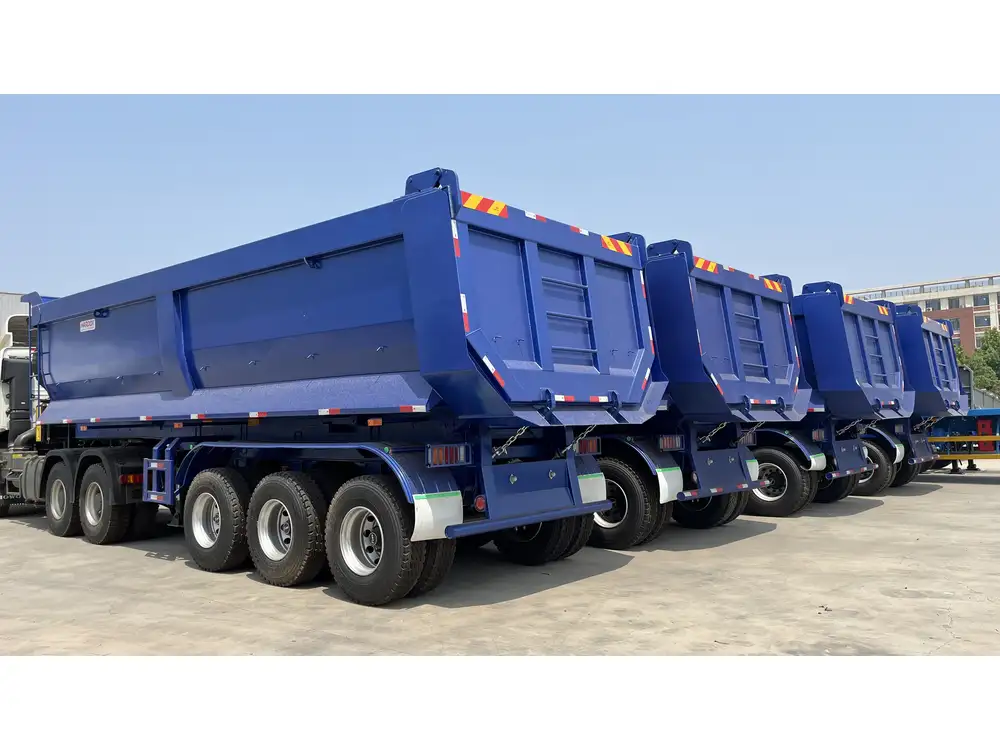
Cost-Effectiveness
Investing in an end dump trailer can result in significant cost savings. Their durability means lower maintenance costs over time, and their efficiency in unloading can reduce labor costs on-site.
Applications of End Dump Trailers
End dump trailers serve a multitude of functions across different industries:
Construction Sites
In construction, end dump trailers are primarily utilized for transporting aggregate materials, providing a steady supply of gravel, sand, and earth necessary for building foundations or roadways. Their ability to discharge quickly helps maintain a consistent workflow.

Agriculture
Farmers use end dump trailers for hauling soil amendments, fertilizers, and even harvested crops. Their robustness ensures that they can handle diverse materials without compromising performance.
Mining Operations
In mining applications, end dump trailers transport mined materials such as ore and tailings. Their sturdy construction enables them to withstand the harsh conditions typical in mining environments.
Waste Management
End dump trailers play a pivotal role in the waste management sector, efficiently transporting construction debris and recyclable materials to designated sites, facilitating a proper disposal process.
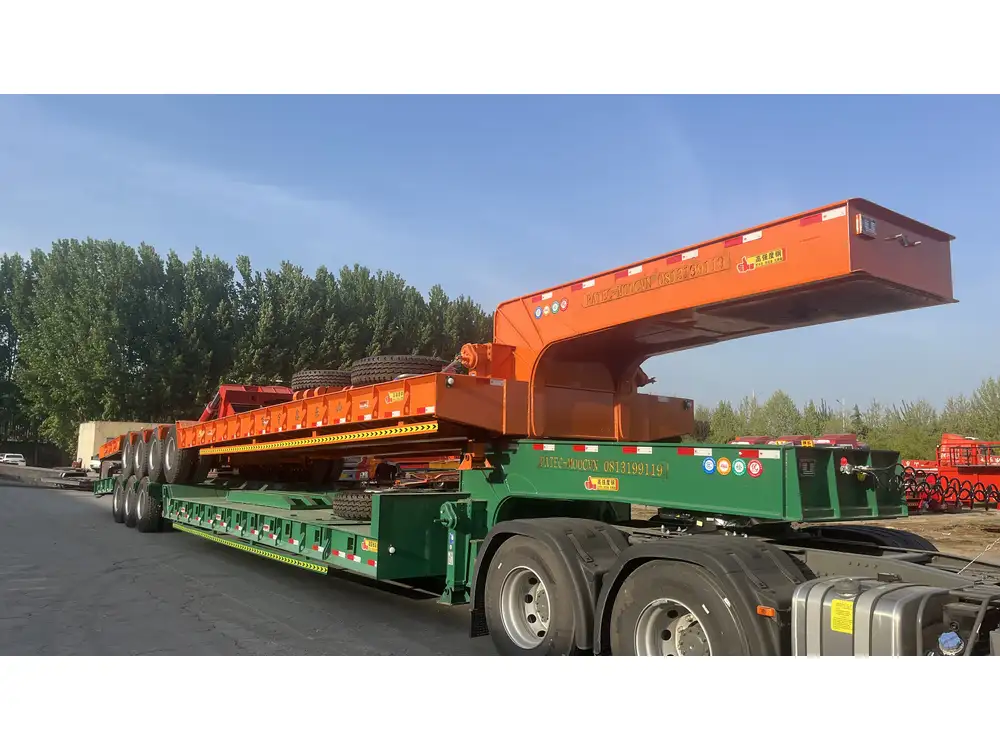
Choosing the Right End Dump Trailer
Determining the ideal end dump trailer for specific needs requires a careful assessment of various factors:
Weight Capacity
Before selecting an end dump trailer, it’s essential to ascertain the maximum payload capacity. This factor should align with both the tractor’s hauling capability and the load requirements.
Material Composition
The construction material of the trailer influences its weight, durability, and cost. Steel trailers are typically more robust, while aluminum options provide a lighter weight, improving fuel efficiency.

Size and Dimensions
Considering the dimensions of the dump bed and overall trailer is crucial for ensuring compatibility with loading equipment and maneuverability on-site.
Hydraulic Specifications
Evaluating the hydraulic system is also important. The efficiency and speed of the hydraulic pump can significantly affect the time it takes to unload materials, impacting operational productivity.
Maintenance of End Dump Trailers
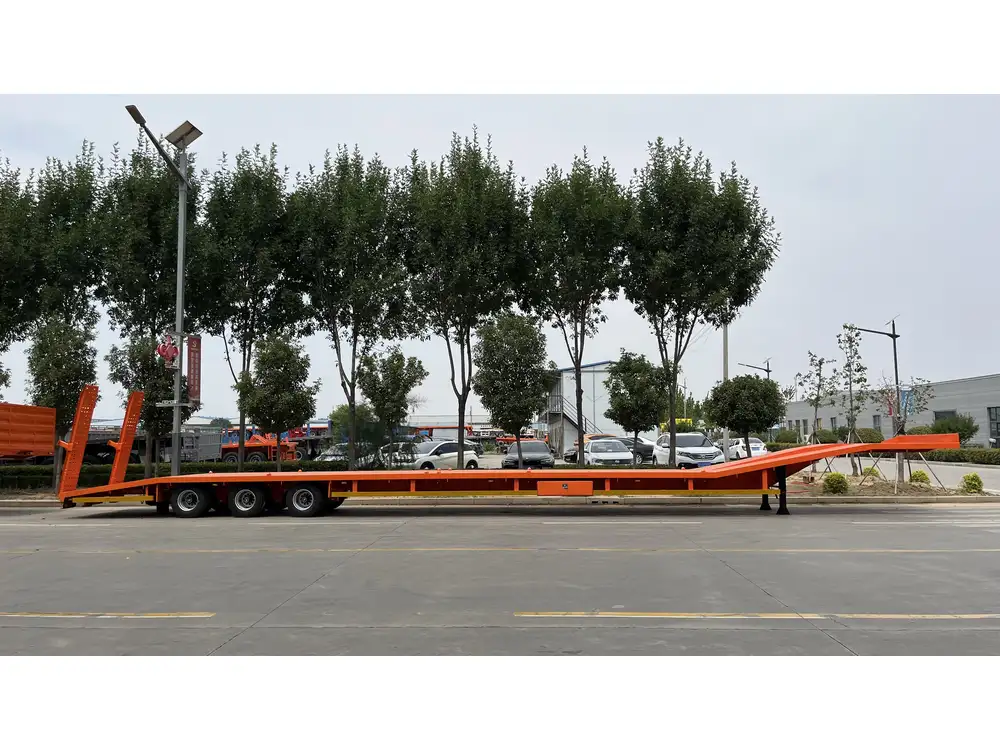
Regular Inspections
Routine inspections are vital to ensure the operational efficiency and safety of end dump trailers. Key areas to inspect include:
- Hydraulic System: Check for leaks, fluid levels, and operational integrity.
- Tires and Axles: Ensure proper inflation and monitor for wear or damage.
- Chassis and Bed: Look for signs of corrosion or structural damages.
Lubrication
Proper lubrication of moving parts in the pivoting and hydraulic systems minimizes wear and prolongs the lifespan of the trailer.
Cleaning
Regular cleaning prevents material build-up that can lead to corrosion or mechanical failures. This is especially important after hauling materials with a high moisture content.
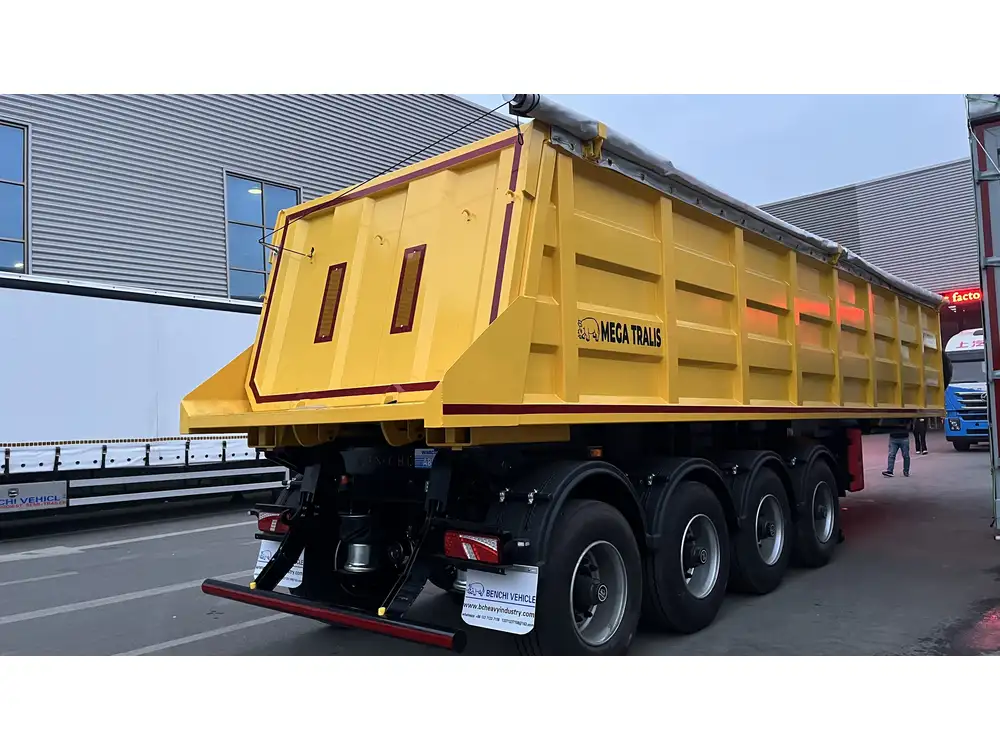
Safety Considerations When Using End Dump Trailers
Ensuring safety during the operation of end dump trailers is paramount. Here are key safety practices to observe:
Weight Distribution
Proper loading techniques are critical. Always ensure that the load is properly distributed to maintain stability during transport and unloading.
Proper Unloading Procedures
Engage the hydraulic system gently when unloading. Sudden movements can destabilize the trailer, increasing the risk of tipping.
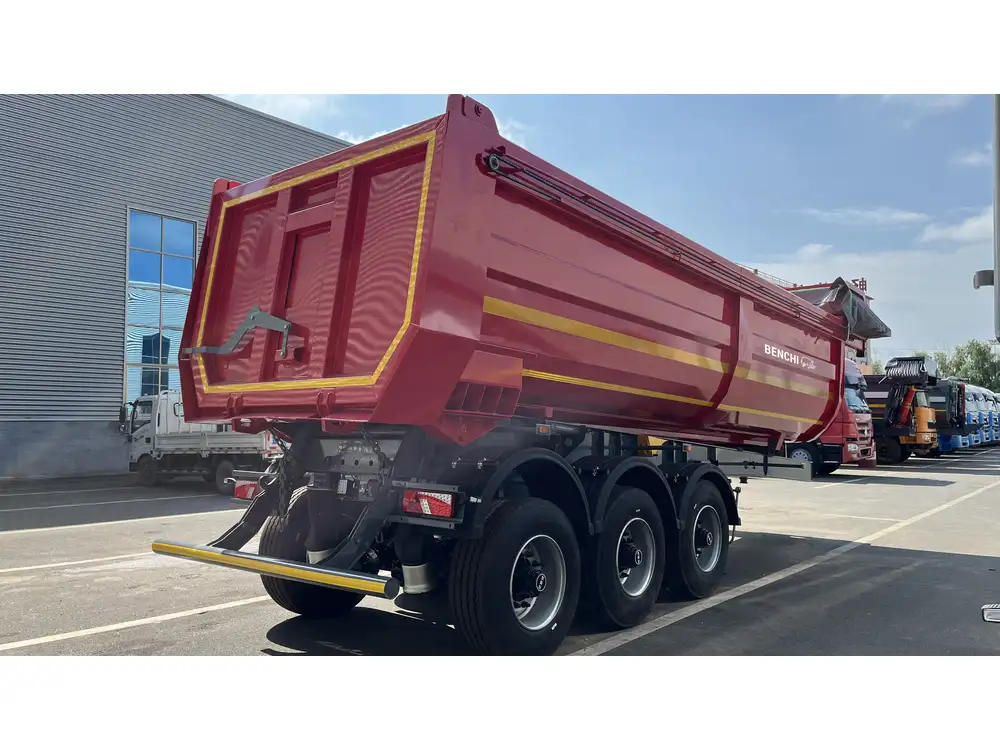
Training and Compliance
Ensure that all operators are trained and compliant with safety regulations. Familiarity with the trailer’s operational features can prevent accidents and enhance productivity.
Use of Personal Protective Equipment (PPE)
Operators and personnel present during loading and unloading should always wear appropriate PPE to mitigate risks associated with equipment operation.
Conclusion: The Importance of End Dump Trailers in Heavy-Duty Transportation
End dump trailers are more than just a piece of equipment; they are a vital component of heavy-duty logistics that facilitate various industries. Their ability to efficiently transport and unload materials, coupled with their versatility, makes them essential for construction, agriculture, mining, and waste management sectors. Understanding their mechanics, advantages, and maintenance requirements empowers users to maximize the benefits these trailers offer.
Investing in the right end dump trailer can streamline operations, enhance productivity, and save costs in the long run. The subsequent boom in efficiency, coupled with a meticulous approach to safety and maintenance, ensures that your end dump trailer will serve you well for years to come.



